
RuneQuest is a fantasy tabletop role-playing game originally designed by Steve Perrin, Ray Turney, Steve Henderson, and Warren James, and set in Greg Stafford's mythical world of Glorantha. It was first published in 1978 by The Chaosium. Beginning in 1984, publication passed between a number of companies, including Avalon Hill, Mongoose Publishing, and The Design Mechanism, before finally returning to Chaosium in 2016. RuneQuest is notable for its system, designed around percentile dice and an early implementation of skill rules, which became the basis for numerous other games. There have been several editions of the game.

Chivalry & Sorcery is a fantasy role-playing game (FRP) first published in 1977 by Fantasy Games Unlimited. Created by Edward E. Simbalist and Wilf K. Backhaus in 1977, Chivalry & Sorcery (C&S) was an early competitor to Dungeons & Dragons (D&D). The designers of the game were dissatisfied with the lack of realism in D&D and created a gaming system derived from it, named Chevalier. They intended to present it to Gary Gygax at Gen Con in 1977 but changed their minds once at Gen Con once they met Scott Bizar who wrote out a letter of intent. After some changes eliminated the last remnants of D&D, Simbalist and Backhaus published the first edition of their game, now renamed Chivalry & Sorcery.
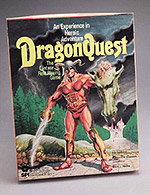
DragonQuest is a fantasy role-playing game originally published by Simulations Publications (SPI) in 1980. Where first generation fantasy role-playing games such as Dungeons & Dragons (D&D) restricted players to particular character classes, DragonQuest was one of the first games to utilize a system that emphasized skills, allowing more individual customization and a wider range of options.
Simulations Publications, Inc. (SPI) was an American publisher of board wargames and related magazines, particularly its flagship Strategy & Tactics, in the 1970s and early 1980s. It produced an enormous number of games and introduced innovative practices, changing the course of the wargaming hobby in its bid to take control of the hobby away from then-dominant Avalon Hill. SPI ran out of cash in early 1982 when TSR called in a loan secured by SPI's assets. TSR began selling SPI's inventory in 1982, but later acquired the company's trademarks and copyrights in 1983 and continued a form of the operation until 1987.

Greg Costikyan, sometimes known under the pseudonym "Designer X", is an American game designer and science fiction writer. Costikyan's career spans nearly all extant genres of gaming, including: hex-based wargames, role-playing games, boardgames, card games, computer games, online games, and mobile games. Several of his games have won Origins Awards. He co-founded Manifesto Games, now out of business, with Johnny Wilson in 2005.
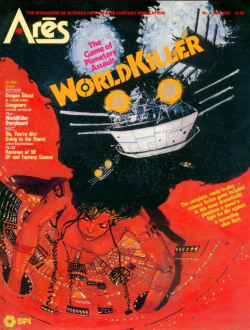
Ares was an American science fiction wargame magazine published by Simulations Publications, Inc. (SPI), and then TSR, Inc., between 1980 and 1984. In addition to the articles, each issue contained a small science-fiction-themed board wargame.

Magic Realm is a fantasy adventure board game designed by Richard Hamblen and published by Avalon Hill in 1979. Magic Realm is more complex than many wargames and is somewhat similar to a role-playing game. It can be played solitaire or with up to 16 players and game time can last 4 hours or more. The game board is a type of geomorphic mapboard constructed of large double-sided hexagon tiles, ensuring a wide variety of playing surfaces.

The Creature That Ate Sheboygan is a science fiction board game released in 1979 by Simulations Publications (SPI). The game received good reviews and won an industry award.
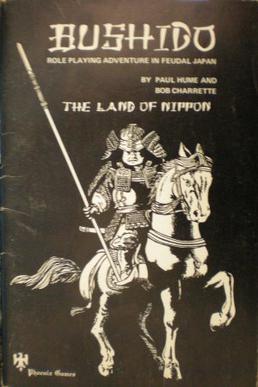
Bushido is a Samurai role-playing game set in Feudal Japan, originally designed by Robert N. Charrette and Paul R. Hume and published originally by Tyr Games, then Phoenix Games, and subsequently by Fantasy Games Unlimited. The setting for the game is a land called Nippon, and characters adventure in this heroic, mythic, and fantastic analogue of Japan's past.

Conquistador, originally subtitled "The Age of Exploration: 1495–1600", is a board game published by Simulations Publications, Inc. (SPI) in 1976 that simulates the exploration of the New World in the 16th century. Players take on the role of European countries sending expeditions to find gold and establish colonies. Although the design uses the trappings of board wargames such as a hex map, combat is not a major part of the game.

Swords & Sorcery, subtitled "Quest and Conquest in the Age of Magic", is a fantasy-themed board wargame published by Simulations Publications, Inc. (SPI) in 1978.
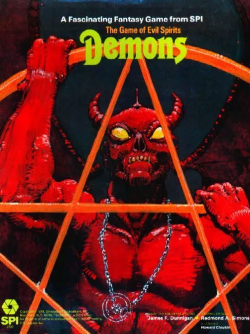
Demons is a board game published by Simulations Publications (SPI) in 1979 in which players control magicians who conjure demons to aid them during a treasure hunt.

Barbarian Kings is a fantasy board game published by Simulations Publications, Inc. (SPI) in 1980.
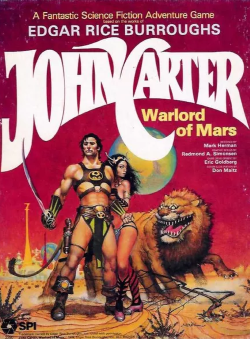
John Carter: Warlord of Mars is a two-player board game published by Simulations Publications, Inc. (SPI) in 1979 that is based on the Barsoom novels of Edgar Rice Burroughs featuring the hero John Carter.

Lords & Wizards is a fantasy board wargame published by Fantasy Games Unlimited (FGU) in 1977.
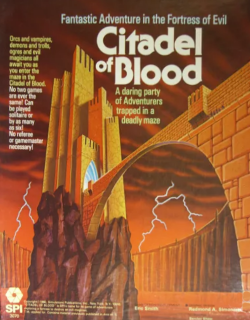
Citadel of Blood, subtitled "Fantastic Adventure in the Fortress of Evil". is a dungeon-crawl board game published by Simulations Publications, Inc. (SPI) in 1980.
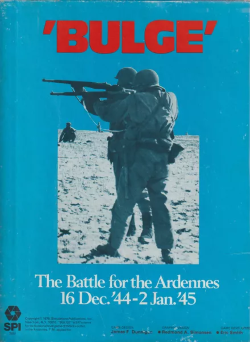
Bulge, subtitled "The Battle for the Ardennes, 16 Dec '44–2 Jan '45", and also published as The Big Red One: The Game of the First Infantry Division at the Battle of the Bulge, is a board wargame published by Simulations Publications Inc. (SPI) in 1980 that simulates the World War II German offensive in December 1944 known as the Battle of the Bulge.
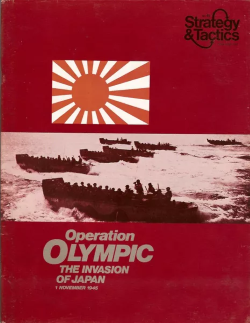
Operation Olympic: The Invasion of Japan 1 November 1945 is a solitaire board wargame published by Simulations Publications, Inc. (SPI) in 1974 that simulates the planned American invasion of Kyūshū, one of Japan's Home Islands, in November 1945. Although critics complimented the game, it did not prove popular, perhaps because it was a solitaire wargame.

WorldKiller: The Game of Planetary Assault is a science fiction board wargame published by Simulations Publications Inc. (SPI) in 1980 that simulates humans in the far future defending a planet against an alien attack.

Dragon Quest, is an adventure board game created by TSR, inc. in 1992, designed as a children's introduction to fantasy role-playing, using a simplified form of the Basic rules for Dungeons & Dragons. It was conceived as a commercial competitor for the popular fantasy board game HeroQuest.



















